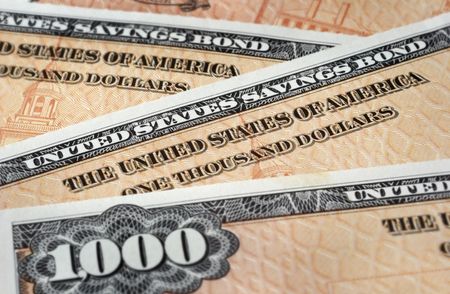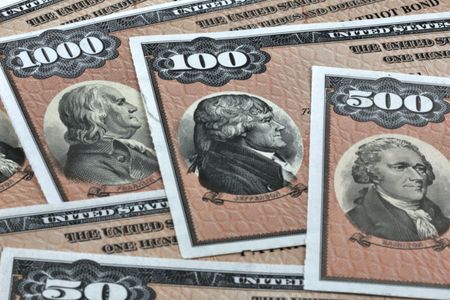Exchange-Traded Notes: The Next Big Thing?
They're essentially bonds issued by their creator, Barclays. If all goes well, they'll act much like ETFs, but with different risks.
As if things weren't confusing enough, a new type of exchange-traded product has hit the market: exchange-traded notes, or ETNs.
In most respects they act just like exchange-traded funds, or ETFs, but they have added tax advantages. They also have a few risks you won't find in ETFs.
Both ETNs and ETFs act like low-cost index funds. Their differences are under the hood. An ETF consists of a portfolio of securities (or sometimes a cache of gold or silver bullion), and owning a share gives you claim to a small portion of that portfolio. With ETNs, however, there is no portfolio. You get what is, in essence, a bond issued by the ETN's creator, Barclays. The ETN promises to repay the amount of your investment plus (or minus) the return of the index that the ETN tracks, less a management fee.

Sign up for Kiplinger’s Free E-Newsletters
Profit and prosper with the best of expert advice on investing, taxes, retirement, personal finance and more - straight to your e-mail.
Profit and prosper with the best of expert advice - straight to your e-mail.
Barclays, one of the world's biggest ETF managers, issued its first two commodity-focused ETNs, iPath SP GSCI Total Return Index (symbol GSP) and iPath Dow Jones-AIG Commodity Index Total Return (DJP), in June 2006. Since then it has issued six other ETNs (with four more due out this summer). Three track different currencies, one tracks the price of crude oil, another follows Indian stocks, and one emulates a strategy of owning Standard & Poor's 500 and selling covered-call options against the index.
If all goes well, ETNs should act much like ETFs (or better, in some ways). The trading price of ETF shares can sometimes stray from the value of the underlying portfolio. But with ETNs, that's not a problem because Barclays promises to pay exactly the index's return minus fees, which range from 0.4% yearly for currency ETNs to 0.89% for the India fund.
As for taxes, ETNs don't pay cash distributions. Instead, the value of dividends, interest and investment gains is lumped into the funds' total return. So you won't face any taxes until you sell your shares. And even then, any gains on shares held more than a year should be taxed at 15%, according to a legal opinion Barclays obtained. In contrast, 40% of gains from ETFs that hold commodities futures and 100% of gains from currency ETFs are taxed at higher, ordinary income-tax rates.
What's the downside of ETNs? The Internal Revenue Service has not weighed in on the proposed tax treatment, so some uncertainty remains. In addition, ETN investors could suffer if Barclays's ability to repay the bonds ever came into question. That's unlikely -- Barclays is one of the world's biggest financial institutions -- but you can't dismiss the prospect entirely.
Most of the indexes tracked by ETNs are also tracked by ETFs. If you are investing in a tax-deferred account, stick with ETFs for now. ETNs could well be the better option if you invest in taxable accounts, but you probably should give them more time to prove themselves before you jump in.
Get Kiplinger Today newsletter — free
Profit and prosper with the best of Kiplinger's advice on investing, taxes, retirement, personal finance and much more. Delivered daily. Enter your email in the box and click Sign Me Up.
-
 Stock Market Today: Dow Rises 854 Points From Its Intraday Low
Stock Market Today: Dow Rises 854 Points From Its Intraday LowIf there's one thing markets hate, it's uncertainty. But uncertainty is all they're getting these days.
By David Dittman Published
-
 Are You a Retirement Millionaire Too Scared To Spend?
Are You a Retirement Millionaire Too Scared To Spend?If you are too scared to spend money in retirement, you may be saddled with regret. Here are three ways to safely enjoy your sizable retirement nest egg.
By Donna Fuscaldo Published
-
 Best Banks for High-Net-Worth Clients 2024
Best Banks for High-Net-Worth Clients 2024wealth management These banks welcome customers who keep high balances in deposit and investment accounts, showering them with fee breaks and access to financial-planning services.
By Lisa Gerstner Last updated
-
 Stock Market Holidays in 2025: NYSE, NASDAQ and Wall Street Holidays
Stock Market Holidays in 2025: NYSE, NASDAQ and Wall Street HolidaysMarkets When are the stock market holidays? Here, we look at which days the NYSE, Nasdaq and bond markets are off in 2025.
By Kyle Woodley Last updated
-
 Stock Market Trading Hours: What Time Is the Stock Market Open Today?
Stock Market Trading Hours: What Time Is the Stock Market Open Today?Markets When does the market open? While the stock market does have regular hours, trading doesn't necessarily stop when the major exchanges close.
By Michael DeSenne Last updated
-
 Bogleheads Stay the Course
Bogleheads Stay the CourseBears and market volatility don’t scare these die-hard Vanguard investors.
By Kim Clark Published
-
 The Current I-Bond Rate Until May Is Mildly Attractive. Here's Why.
The Current I-Bond Rate Until May Is Mildly Attractive. Here's Why.Investing for Income The current I-bond rate is active until November 2024 and presents an attractive value, if not as attractive as in the recent past.
By David Muhlbaum Last updated
-
 What Are I-Bonds? Inflation Made Them Popular. What Now?
What Are I-Bonds? Inflation Made Them Popular. What Now?savings bonds Inflation has made Series I savings bonds, known as I-bonds, enormously popular with risk-averse investors. So how do they work?
By Lisa Gerstner Last updated
-
 This New Sustainable ETF’s Pitch? Give Back Profits.
This New Sustainable ETF’s Pitch? Give Back Profits.investing Newday’s ETF partners with UNICEF and other groups.
By Ellen Kennedy Published
-
 As the Market Falls, New Retirees Need a Plan
As the Market Falls, New Retirees Need a Planretirement If you’re in the early stages of your retirement, you’re likely in a rough spot watching your portfolio shrink. We have some strategies to make the best of things.
By David Rodeck Published